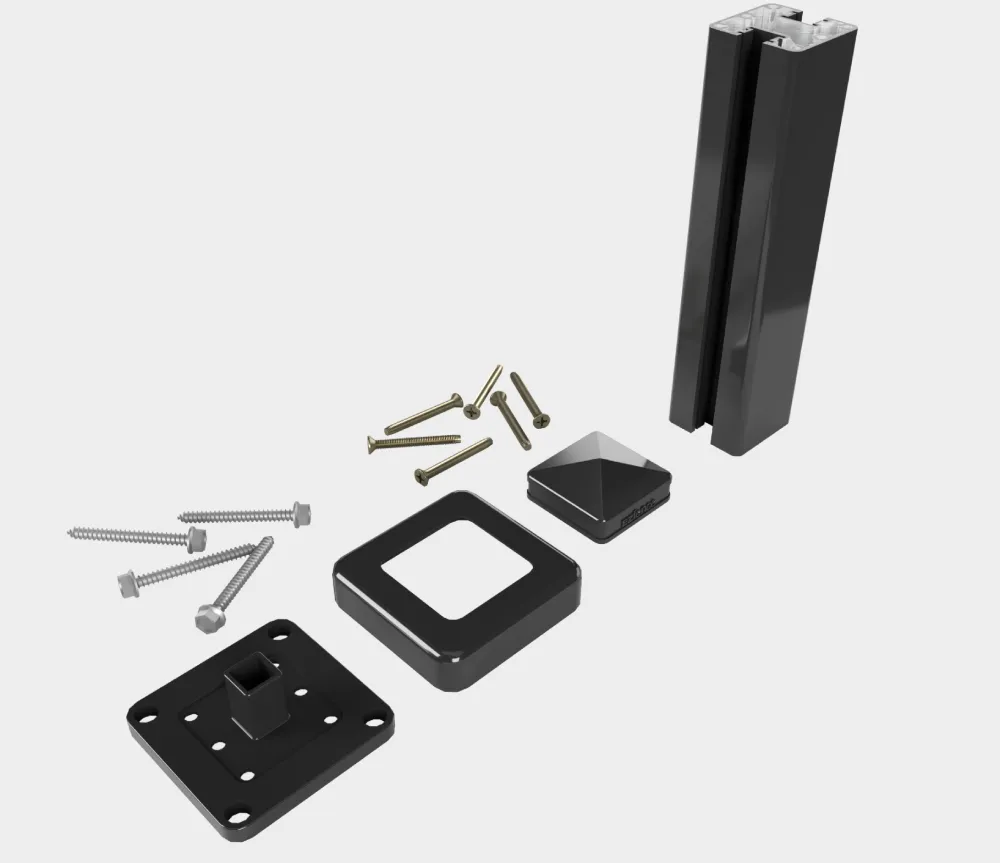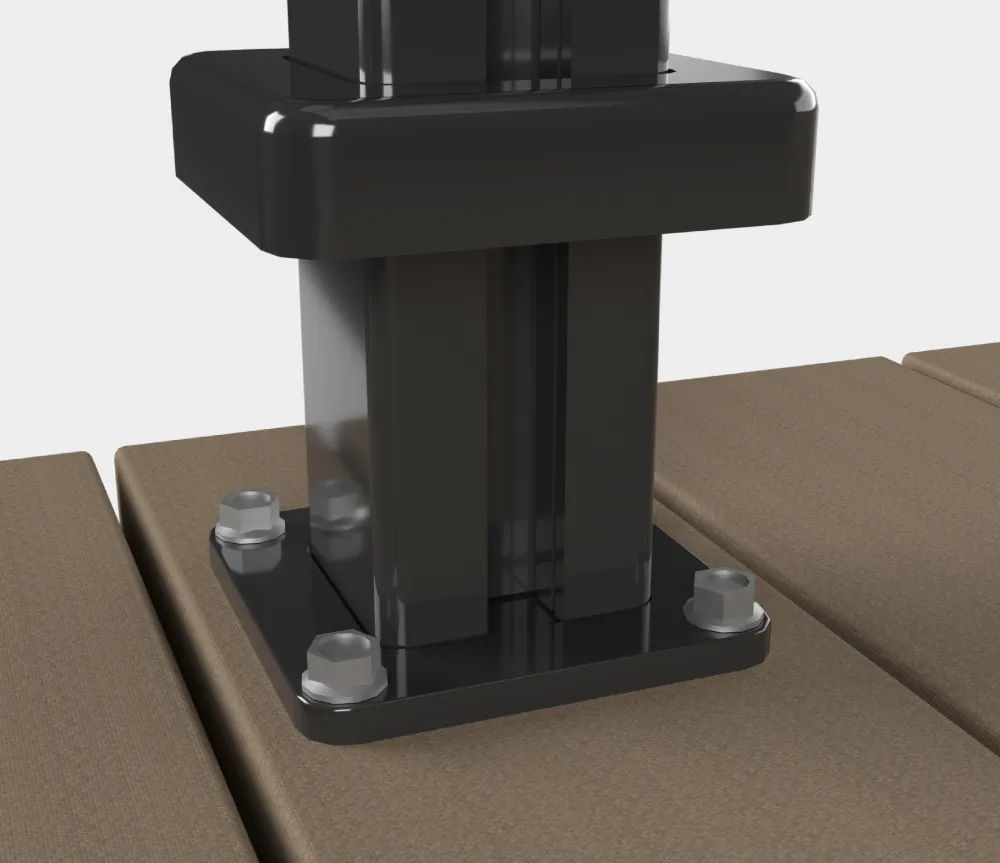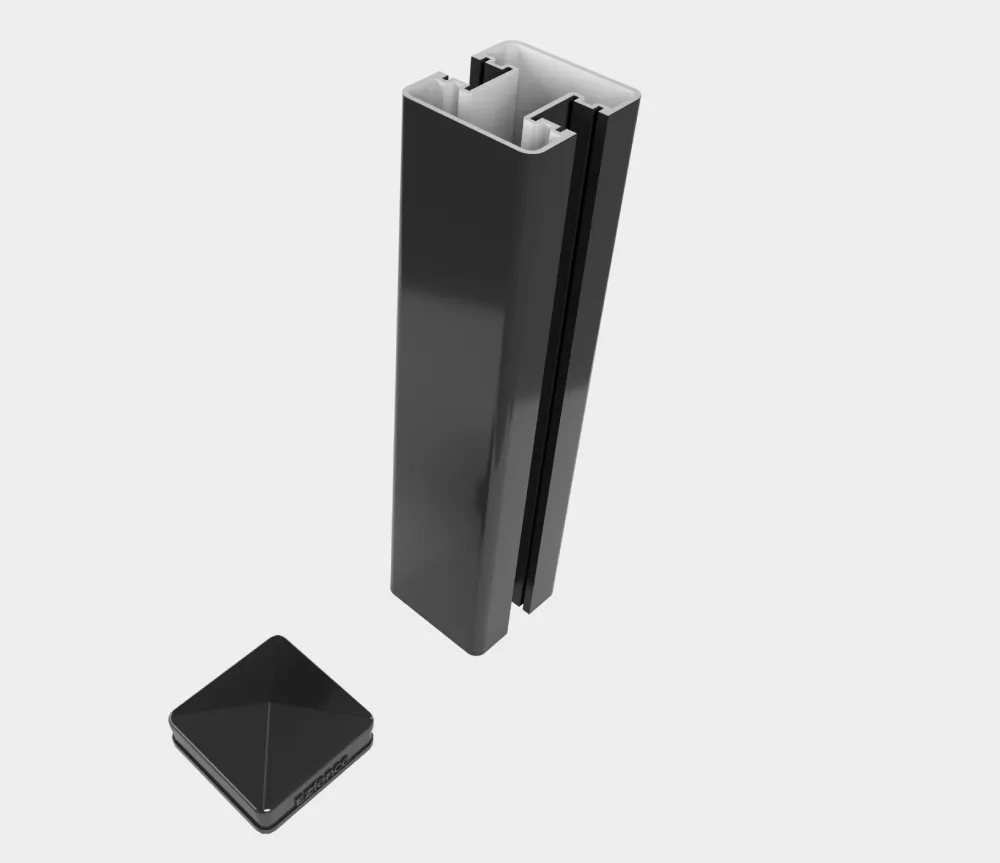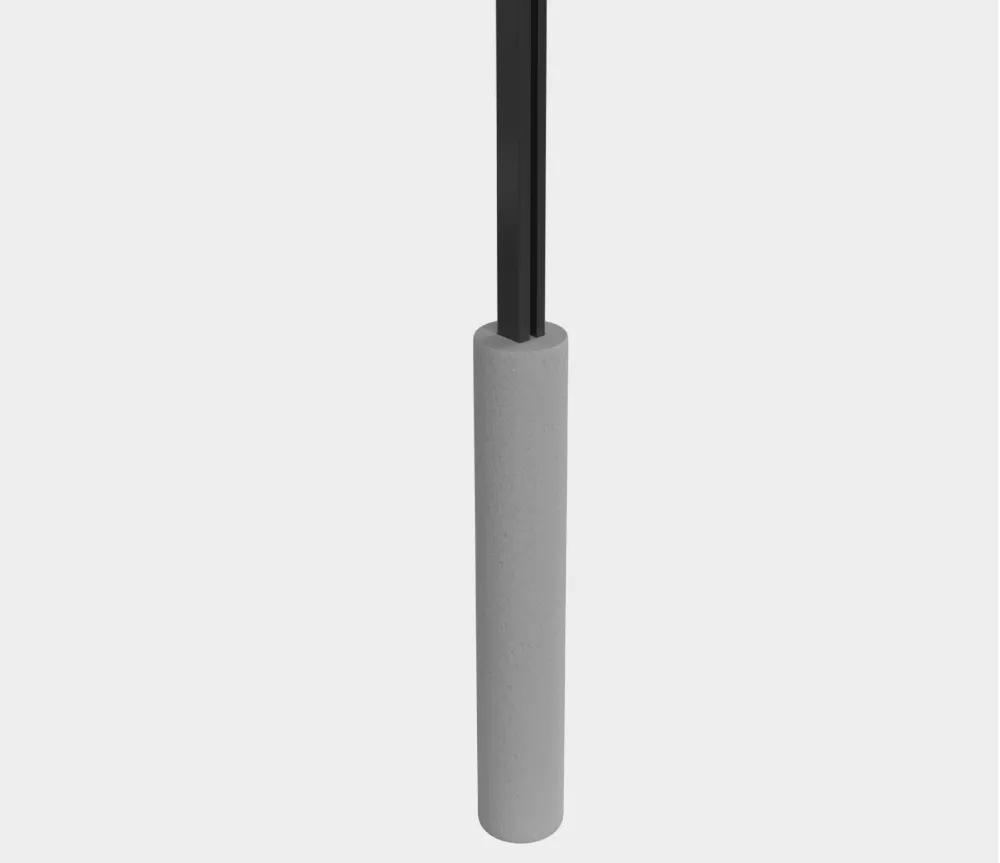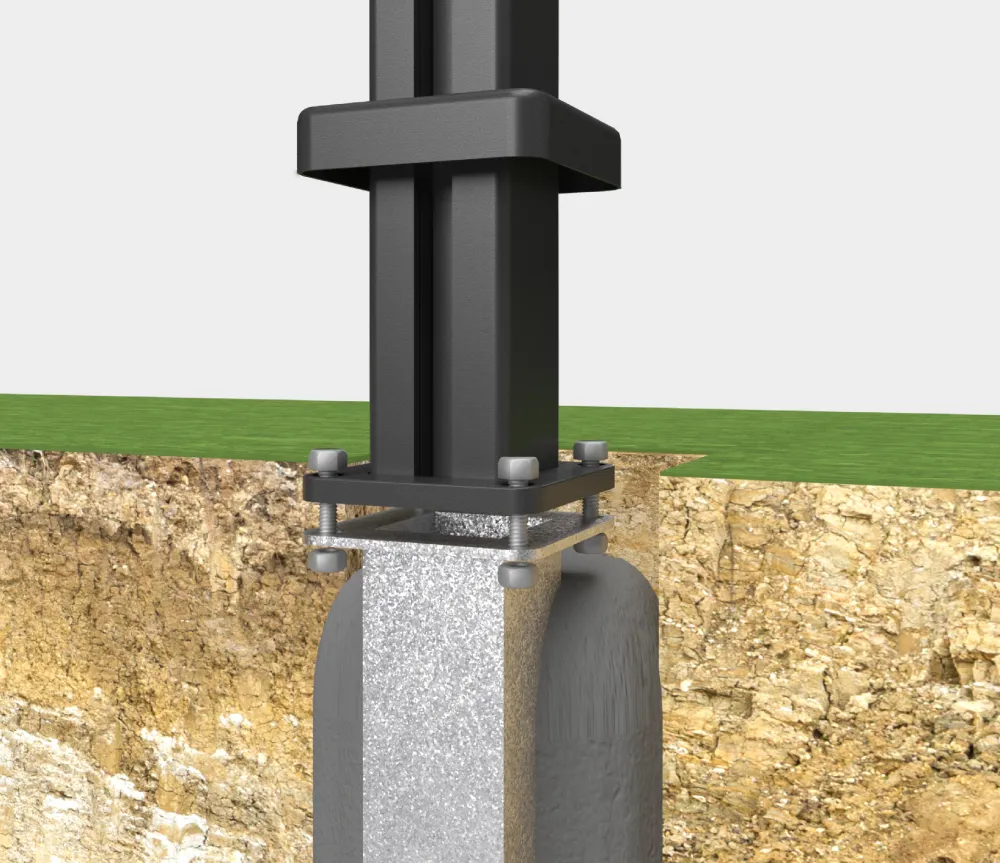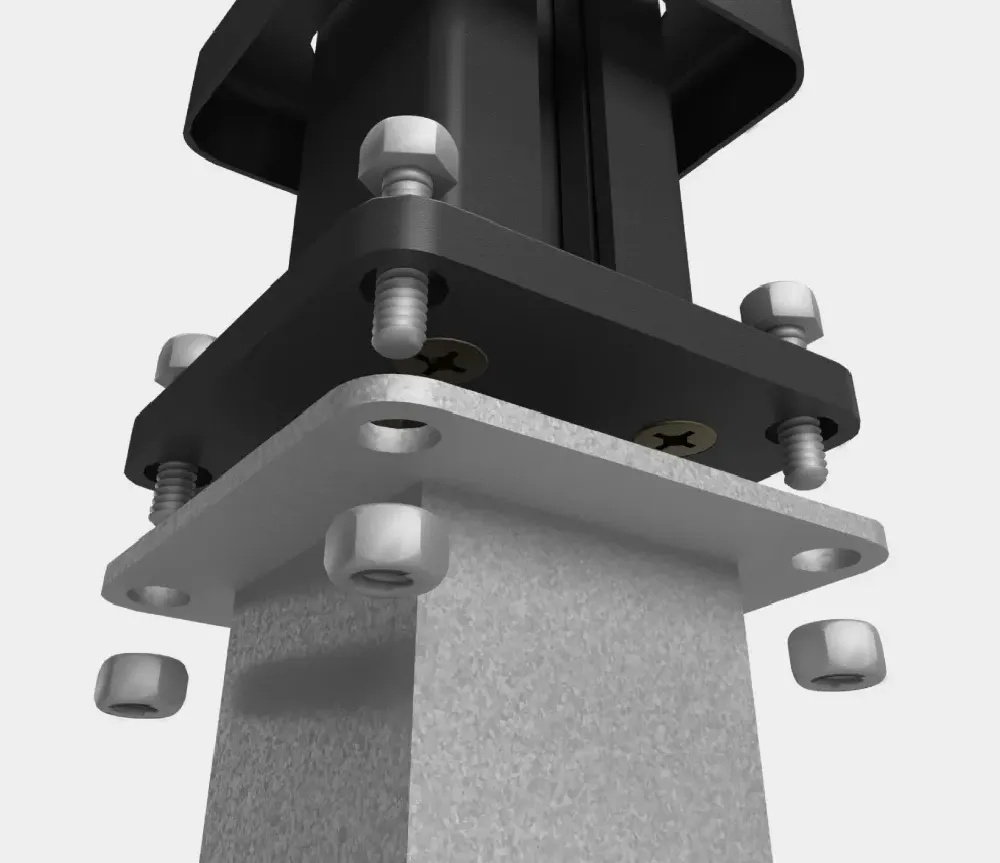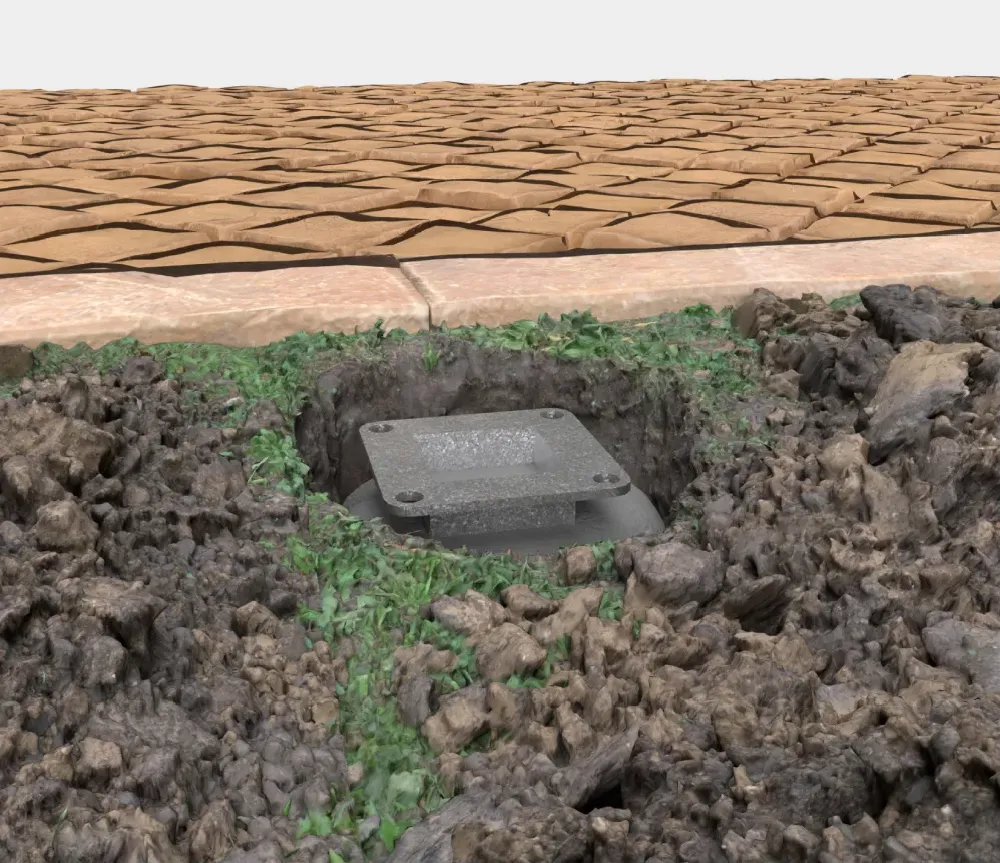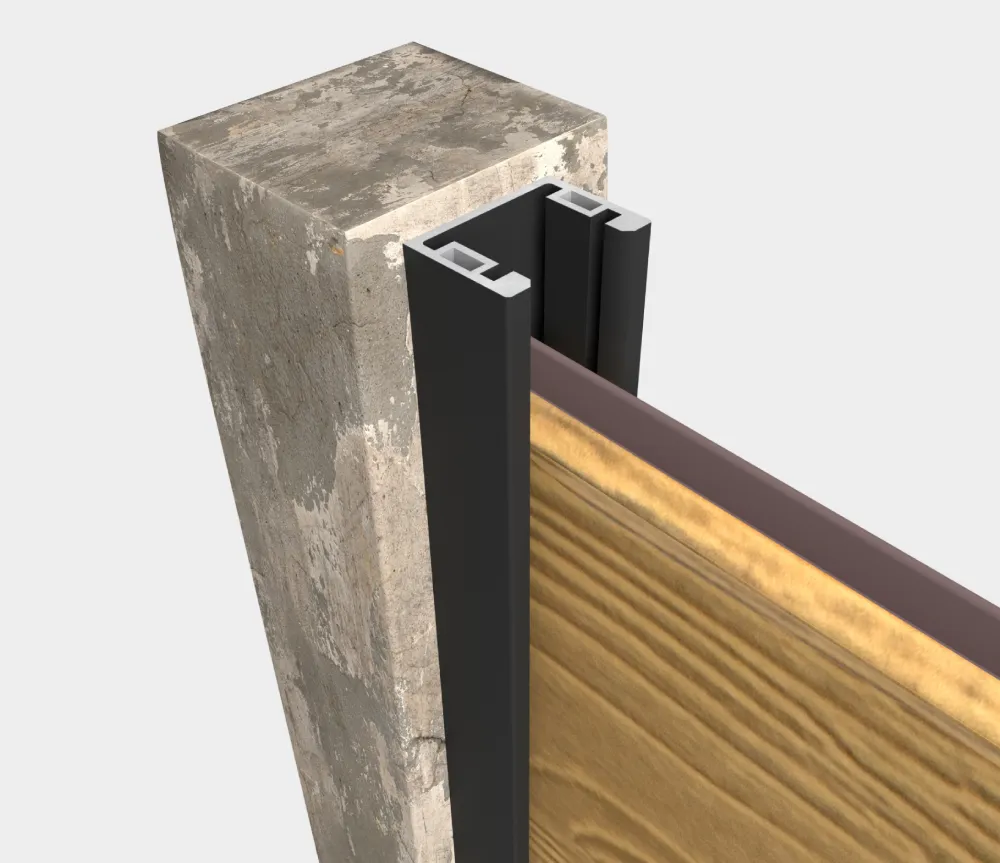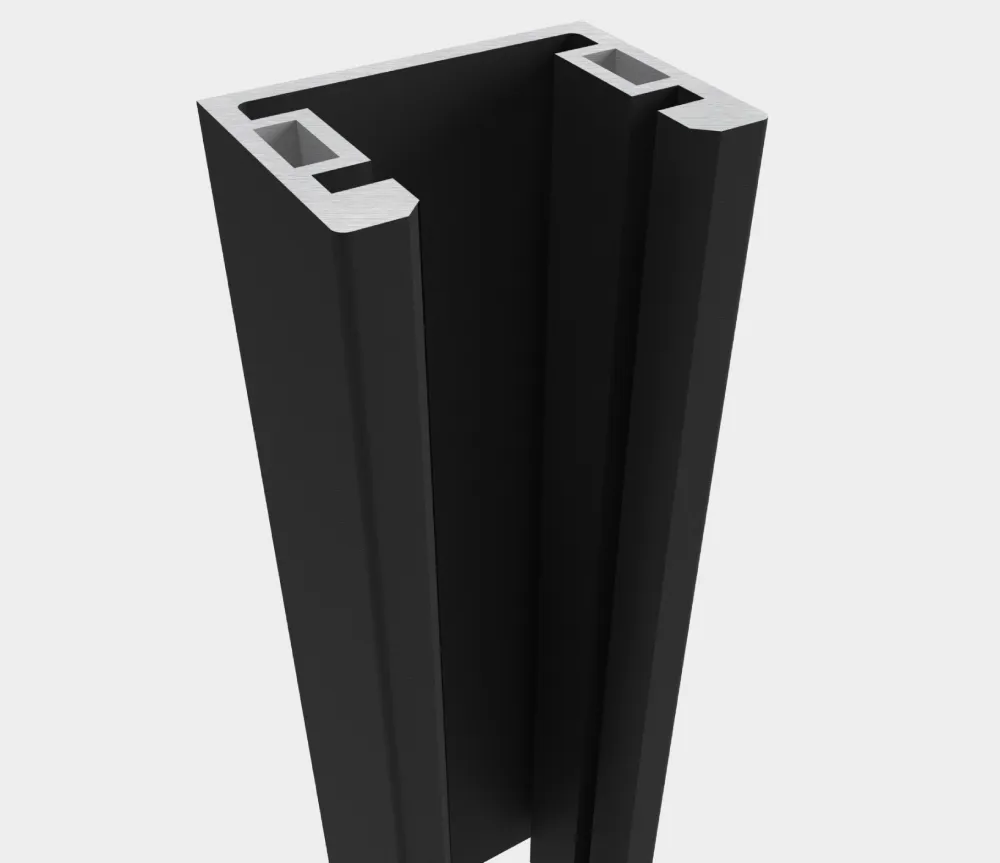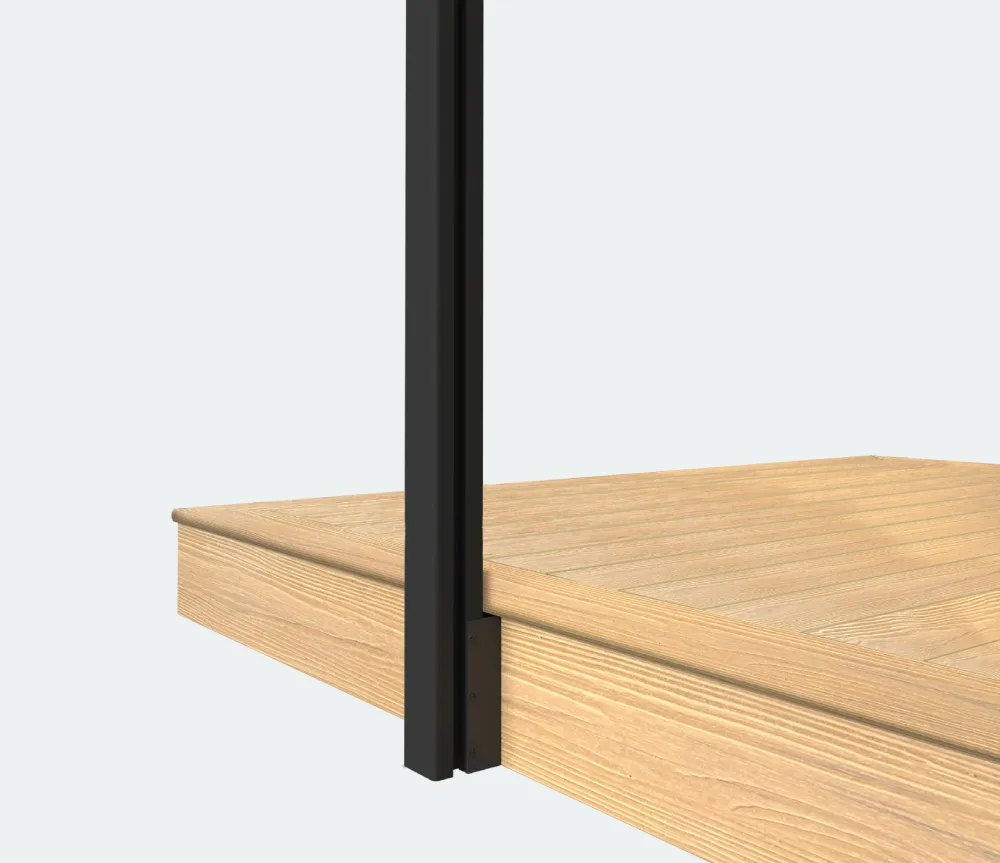POST MOUNTING OPTIONS FOR COMPOSITE FENCING
Building a beautiful and durable composite fence adds value and elegance to your property. But before you get started on those stunning fence panels, choosing the right post mounting method is crucial. This guide explores the various options available to ensure your fence remains strong and secure for years to come, withstanding Canada’s unique weather conditions.
Concrete Surface Anchoring
Securing fence posts directly onto existing concrete surfaces using a robust, durable base plates that are designed to ensure a strong, stable connection between the fence post and the concrete. The base plates are anchored to the concrete using heavy-duty fasteners, creating a secure and long-lasting installation.
Best For: Patios, sidewalks, slab, curb, retaining wall or any pre-existing concrete surfaces.
Benefits: No Digging Required and a faster installation compared to in-ground methods, Easy to adjust level and compensate weight of gates, Easy to repair in case of damage, Can be removed and reinstalled
Wind Resistance:
- Post + Base assembly can resist 100km/h wind gusts occasionally for standard size panels (6ft high x 6ft 9in center to center).
- Anchors/Concrete resistance will vary depending on the quality of the concrete and the edge distance.
- Span can be reduced to increase overall wind resistance.
Surface Minimum Requirement:
- Minimum thickness of 4 inch
- Minimum width of 10 inch (2.5 inch distance from any edges of the base to the edge of the surface)
- Concrete should be rated at least 3500 psi (25MPa)
Deck Anchoring
Installing fence posts by attaching them directly to your deck’s structure. This method utilizes post bases combined with specialized fasteners, designed to secure the posts firmly to the wood or Composite decking without compromising the deck’s integrity or aesthetic appeal.
Best For: Residential Decks, Pool Surrounds, or any Raised Platforms with a structure made of wood.
Benefits: No Ground Disturbance, fast and clean installation, Easy to adjust level and compensate weight of gates, Easy to repair in case of damage, Can be removed and reinstalled.
Wind Resistance:
- Post + Base assembly can resist 100km/h wind gusts occasionally for standard size panels (6ft high x 6ft 9in center to center).
- Anchors/Wood resistance will vary depending on the quality of the wood structure and the depth embedment of the screws
- Span can be reduced to increase overall wind resistance.
Structure Minimum Requirement:
- Screws should be surrounded by ¾ inch and embedded by at least 2.5 inch of solid structural wood.
- Wood structure should be properly braced to support all moments created by the wind on the fence panels.
In-Ground Concrete Embedment
Concrete Embedment involves digging holes, placing fence posts, and securing them with poured concrete.
This method ensures the posts are firmly anchored into the ground, providing a stable and permanent base for fencing structures.
Best For: Regular fencing application, permanent installations requiring strong support, Areas with uneven terrain or susceptible to high winds.
Benefits: Excellent stability and durability, Cost-effective, Time saving
CONCRETE EMBEDED STEEL BASE
Securing fence posts to galvanized steel piles that are embedded in concrete into the ground. This combination provides a robust foundation, especially suited for unstable or soft soil conditions.
Its adjustability and reusability make it a valuable option for both permanent and removable fencing needs. The base can be hidden by embedding the base a bit lower than the grade level.
Benefits: Adjustability, Easy and cost-effective repairs, Removable
Best For:
- Post supporting a gate. No need to anticipate the weight of the gate when installing the base. Post and gate straightness can further be adjusted in one easy step.
- Anticipate eventual constructions. 1 or 2 consecutive posts should be mounted that way where machinery would be passing in case of backyard or house renovations.
- Fence exposed to damages. If you think your fence will be located where it could be damaged by something out of your control such as fence delimiting a parking lot or snow banks plowed against the fence, you should consider installing concerned posts with this method.
- Unstable soils
Angle Channel & U-Channel Mounting
U-Channel Mounting involves installing a U-shaped metal channel to an existing post or wall instead of installing a full post.
Angle Channel Mounting uses the same method of installation but is used when the substrate surface is not perpendicular to the fence boards.
Best For: Attaching fence to a wall, Attaching fence to an existing post
Benefits: Compatible with all EZfence options and parts, Cost-effective
Fascia Deck Brackets
Fascia Mounting allows posts installation on the outside perimeter. Two specific brackets are available to secure posts either to the front fascia or the corners of your deck ensuring a seamless integration with your decking structure.
Best For: Useful when there is no solid structure to mount the posts from the top of the deck and its under-lying structure is not accessible. Small decks where mounting the posts on the top reduce significantly the usable space.
Benefits: Maxime the usable area of your deck, Compatible with decks surrounded by a nosing board that offsets the fascia by up to 1 inch
Wall Mounting Brackets
Wall Mounting Brackets offer a reliable method for attaching fence posts to the sides of walls or buildings. Includes two specific types of brackets either corner placements or direct wall attachments, ensuring a secure and aesthetically pleasing fence.
Best For:
– Preserving the fence posts appearance without digging near the wall
– Mounting posts that support a gate.
– Wall Compatibility, integration between fencing and architecture is desired
Benefits: Compatible with uneven walls like house footing with cladding or different finish above ground.Offset of the bracket is 1 inch and can be increased with extra shims at the back.Versatility, Durability, Aesthetic Appeal
 CANADA – ENGLISH (CAD$)
CANADA – ENGLISH (CAD$) United States – ENGLISH (USD$)
United States – ENGLISH (USD$) Company
Company





